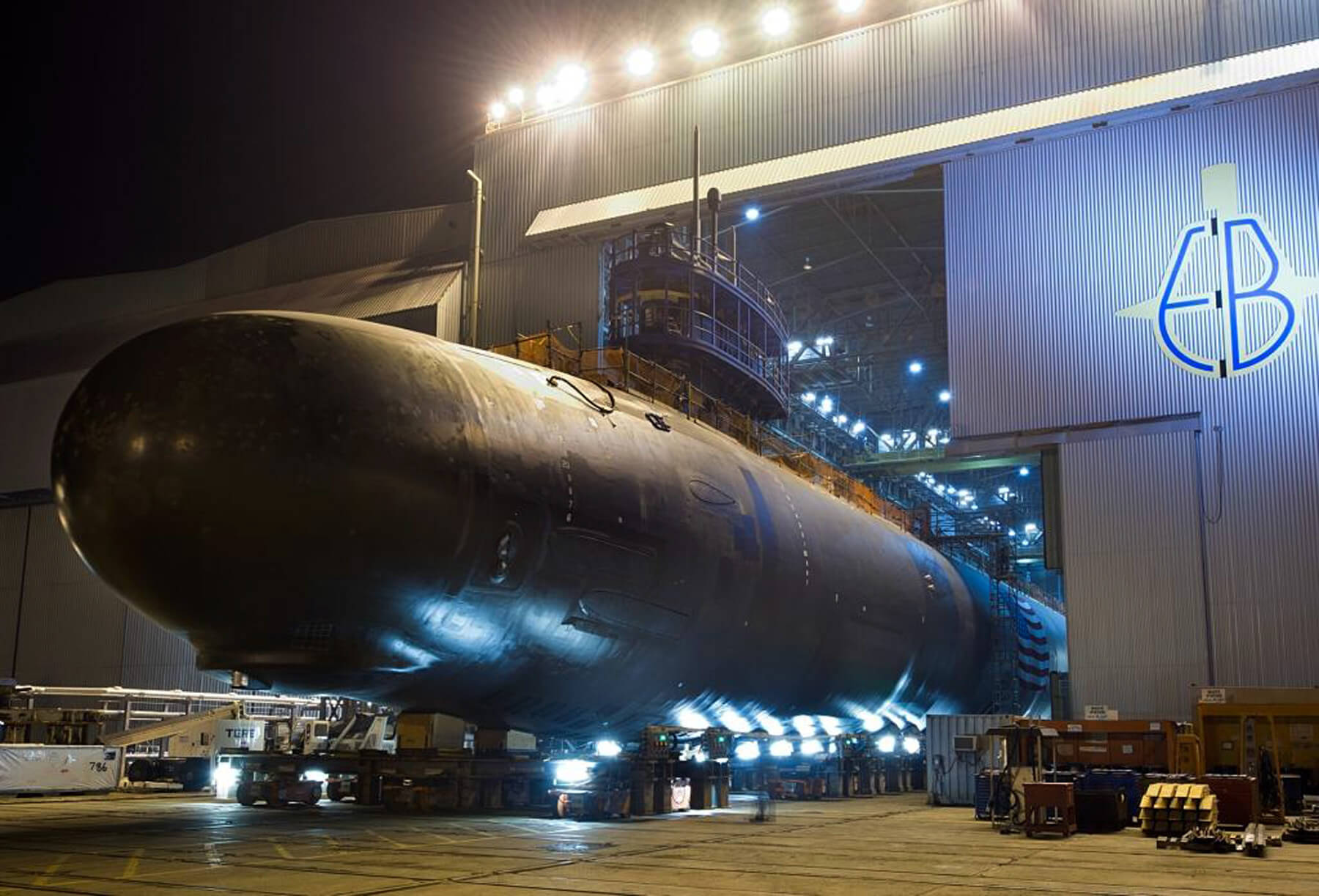Electric Boat Hiring at Historic Rate

“EB is hiring.”
That was the message General Dynamics Electric Boat president Kevin Graney delivered at the company’s annual legislative briefing in Groton on Feb. 27.
After adding 3,900 new employees in 2022, the submarine manufacturer needs to hire an additional 5,000 workers this year.
“What’s happening with our workforce is that we’ve got a number of them aging out toward retirement, and so we’re bringing in new people just as quickly as we can to replace them,” Graney said.
“The hiring cycle that we’re looking at right now is 4,000 or 5,000 people a year. I don’t see any real letup in our need to find people.”
Graney said this is the highest rate of hiring in the company’s history.
Dual Submarine Production
With 62% of its workforce in Connecticut, the submarine manufacturer currently employs about 20,000 people and is the state’s largest for-profit company.
“EB is in the midst of a once-in-a-generation expansion to support concurrent production of the Virginia-class submarine and the Columbia-class nuclear powered submarine,” Graney said.
In December, Electric Boat was awarded a $5.1 billion contract from the U.S. Department of Defense for the construction of the first two Columbia-class submarines.

The first is scheduled to be delivered to the U.S. Navy in 2027.
Graney said the Columbia and Virginia-class submarines are among several projects underway for the company.
He added that the push to hire each year will continue, with 2033 projected as one of the company’s peak hiring years.
Talent Pipelines
Graney said Electric Boat will build upon programs with local elementary, middle, and high schools and is engaging with regional and national defense workforce pipeline programs.
“These programs provide exposure to the trades and build awareness of careers at Electric Boat, and early awareness of careers is critical to our future,” he said.
“The people that we hire in 2033, think about this, are currently in the second grade.”
As Electric Boat expands its production and workforce, it’s also relying on federal funding for supplier development.
Graney said that over the past five years, approximately $26 billion has been awarded to nearly 2,800 suppliers in 48 states.
That includes more than $1.1 billion to 375 businesses across Connecticut.
“This funding is really helping to stabilize our industrial base and support our ability to meet the Navy’s needs,” Graney said.
‘National Priority’
Speaking at the event, U.S. Sen. Richard Blumenthal said the U.S. faces “the biggest challenge to its workforce development and defense industrial base since World War II.”
U.S. Rep. Joe Courtney (D-CT 2) called submarine production and prioritizing workforce development a national priority.
“If you took the pie chart of the entire Navy shipbuilding budget, submarine construction now is half of the total budget,” he said.
U.S. Rep. Joe Courtney called submarine production and prioritizing workforce development a national priority.
“That is a huge sea change in terms of what’s happened in terms of the investment.”
Courtney pointed to an executive order signed by President Joe Biden in 2021 designating the submarine workforce as essential to the nation.
He said that order led to an increase in federal workforce development funding from $20 million in 2022 to $267 million in 2023 through the National Defense Authorization Act.
“There really is a recognition that if we’re going to really make all of these great procurement decisions real, then you have to come up with a system with the industrial base to actually execute it,” he said.
Workforce Housing
The Defense Authorization Act gives the U.S. Navy the authority to use some of that funding to address housing and transportation as part of workforce development.
“Housing is definitely a big issue in terms of trying to not just recruit people, but to keep them in the region,” Courtney said.
“The Navy and Congress, to their credit, recognize it has to be part of this process of trying to size up a workforce.”
The Connecticut General Assembly is considering several bills to expand workforce housing in the state.
“We cannot grow Connecticut’s economy without addressing the critical need for affordable housing.”
CBIA’s Chris DiPentima
In his Feb. 8 budget address, Gov. Ned Lamont proposed nearly doubling the state’s investment in affordable housing development to $600 million over the next two years.
“We are fighting to make sure part of the governor’s housing budget is here in Eastern Connecticut to build that desperately needed housing,” said state Sen. Cathy Osten (D-Baltic).
CBIA’s 2023 Transform Connecticut policy solutions include incentivizing the development of workforce housing in opportunity zones and remediated brownfield sites.
“We cannot grow Connecticut’s economy without addressing the critical need for affordable housing,” said CBIA president and CEO Chris DiPentima.
“The investment on the state and federal level is necessary to give companies like Electric Boat the tools they need to attract and retain a high quality workforce.”
RELATED
EXPLORE BY CATEGORY
Stay Connected with CBIA News Digests
The latest news and information delivered directly to your inbox.


